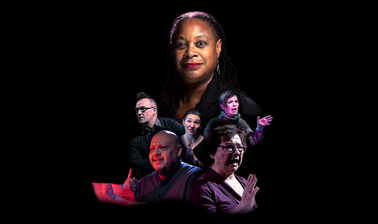Dimensions of Social Identity
Jallicia Jolly, former PhD candidate at the University of Michigan's American Culture program and current Postdoctoral Fellow and Visiting Assistant Professor at Amherst College, discusses how our social identities affect our interactions with our communities. See more here
Excerpt From

Transcript
In this module we talked about social identities, power, and privilege.
Social identity shape how we interact with each other in the world.
Everyone has a social identity, and
it's important to be aware of those identities when entering a community.
We will talk about six key dimensions of social identity.
>> Salience, particular identities that we
hold might feel more important at certain moments in our lives and
in specific social settings.
These identities might be at the forefront in your mind at this moment.
>> Visibility and invisibility.
Certain identities might be particularly apparent while others may
be harder to perceive. >> Changing,
identities may change over time like age.
The implications of these identities may also change based on social context.
>> Choice,
some of these identities are chosen, while others may be assigned at birth or
passed down through our families. >> Multiple,
we all have multiple identities that shape us, our group memberships and
the way we experience the world. >> Connected, our multiple identities
can form connections that uniquely shape our experiences and group memberships.
These connections may be due to our current social context,
our socialization, or other factors. >> All of these dimensions
influence the ways we interact with others in social relationships.
>> Something that's kinda spoke to me was
the idea of visibility and invisibility.
As a white man, and I understand race is a social construct,
but people can perceive me differently because of my race.
But for example as a gay male in a lot of spaces, people don't know that I am.
Unless I'm announcing that that's not something that like people will be able to
easily see.
That's something you have to sort of discuss or talk about.
This can mean people may act different towards me than they would
if they knew that I was gay. >> Yes, you spoke about your identities in
terms of invisibility and visibility, and I also heard you talk about multiple and
connected identities and how that coalesce to shape your experiences.
For me, that's intersectional and
my intersectional identities shape my experiences as a black woman.
So as a Jamaican American who identifies as a woman of color and
who is also first generation and an immigrant, the multiple and connected
portion of it stand out because of my intersectional identities and experiences.
And when those overlap as you described to coalesce into unique experiences,
I think that really shapes the ways our bodies move in the world,
the ways they are perceived.
But also not just how we're socialized but how institutions and people respond to us.
